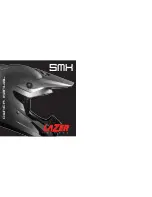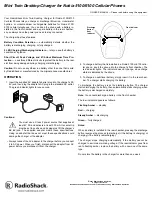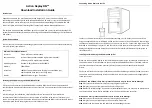
Identifying the Hardware Features
1
The hard disk drive can
be upgraded with an
optional one. (See page
47.) The security screw
shipped with your computer
can prevent the hard disk
drive from being removed
easily. (See page 89.)
2
The security keyhole is
used with a mechanical
lock.
3
The PC Card eject
buttons eject the PC Card
from the PC Card slot.
4
The PC Card slots accept
a PC Card, CardBus Card,
and Zoomed Video Card.
5
The volume control
adjusts the sound level for
the built-in speaker.
6
The microphone/line-in
jack, a -inch (3.5-mm)
diameter jack, is where you
connect a microphone or
an external stereo audio
device.
7
The headphone jack, a
-inch (3.5-mm) diameter
jack, is where you connect
a stereo headphone or
external speakers.
8
The power switch turns
the computer on and off.
9
The external-input-device
connector is used to
attach a mouse, external
keyboard, or external
numeric keypad to the
computer.
1
The power jack is where
the AC Adapter cable is
connected.
11
The universal serial bus
(USB) connector allows
you to connect any device
that conforms to the USB
interface. Many recent
digital devices comply to
this new standard.
12
The serial connector is
where you connect a 9-pin
serial-device cable.
13
The parallel connector is
where you connect a
parallel-printer signal cable.
14
The external-monitor
connector is where you
attach the external monitor.
15
The connector cover is
removable.
16
The external suspend
mode indicator shows the
condition of suspend mode.
(See page 7.)
17
The external battery
indicator shows the
condition of the battery.
(See page 7.)
Chapter 1. Getting Familiar with Your Computer
5
Title: C79EPMST CreationDate: 06/22/98 12:00:09
















































